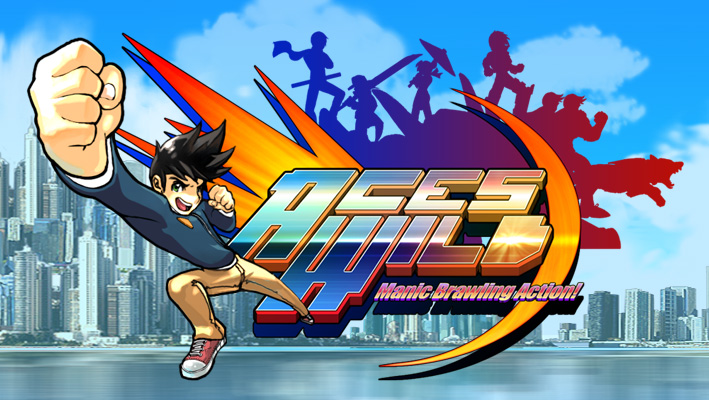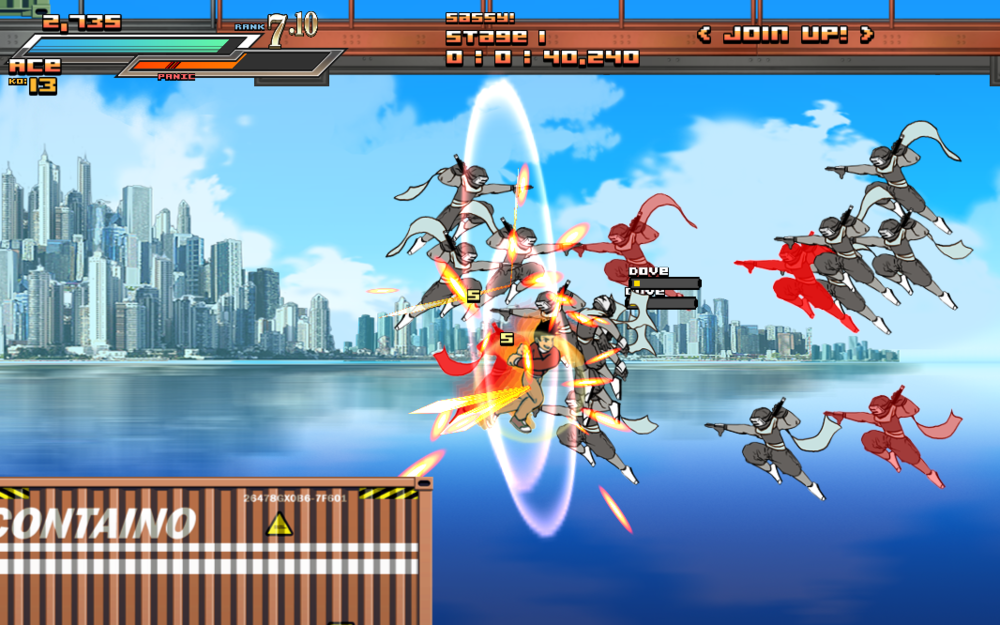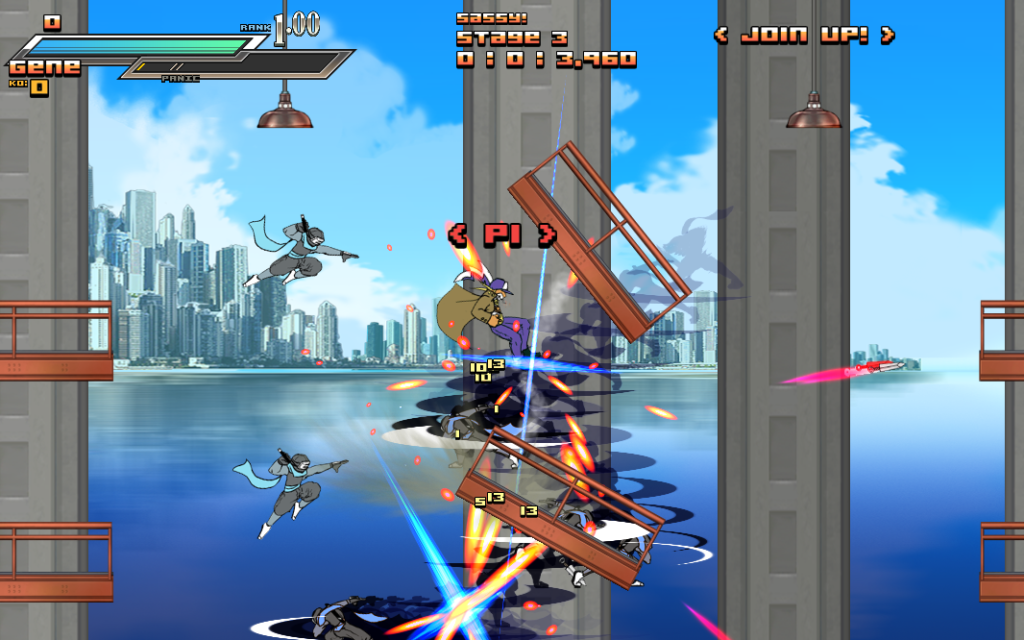Last updated on July 29, 2016
So, I remember playing Aces Wild long, long ago. And yet, somehow, I just sorta stopped playing it. You know the deal if you play video games – distractions are plentiful, frequent, and constant in the world of digital entertainment. That especially goes when you run out of time to play games and the like. But, as per usual, games that I bought years ago suddenly become relevant again, and Aces Wild gets me that perfect fix of dodge-heavy action combat without the extreme time investment.

I like Aces Wild right in this very moment precisely because of its clear arcade inspiration. With an art style taken straight out of Sega’s incredibly AM2 logo (or Outrun, if you want to be more precise about it) and some hilariously inconsistent enemy designs from the Internet’s favorite doge to who knows what, you get the aesthetics of the good old days of 1990s arcade games from Japan. Capcom’s beat’em ups are a clear influence on the game’s design, of course, but it really bests them on a number of different fronts.
Most notably, it adopts a lot of what made Bayonetta work so well: active defensive measures. You don’t run away from enemies – you dodge! And dodging is fun, because it lets you stay in melee combat for as long as possible to keep your combo going. You kinda just smash the attack button a lot, flying around and beating things to death in the most over-the-top fashion possible. Did I mention you fly, a lot? The whole game revolves around aerial combat, dashing, and apparently playing the most accurate rendition of Dragon Ball Z yet (the games with the official license don’t even compare a little bit).

The flying really makes for a compelling experience, precisely because it hasn’t been done before so elegantly. Aerial combat seems weird, but the float and movement feels right, bizarrely enough. This lets you chase and catch enemies in mid air, especially when you hit them hard enough to bounce them off the walls of your current screen! The movement system works perfectly when you can dash right into a bouncing enemy and immediately smack them into other enemies for that wonderful “bowling ball” situation – perfectly arcadey!
Not surprisingly, Aces Wild recommends offense at all times. The more attacking you do, the higher your score multiplier rises and the higher your Wild meter gets. The Wild meter allows you to do more damage, but also takes more damage at the same time. This makes for a high risk, high reward type of game where you constantly dodge, attack, and try not to die as enemies attack from every conceivable angle (remember, this is a 2D game where you fly, so that’s a lot of angles to cover!). Dashing and Crash attacks (basically hard hitting charge moves that knock enemies off the planet) use a little Wild, as does the Panic button, which acts like an AoE that restores all your health and empties the Wild meter.

But, you really just want to get in-close and stay on the offensive. Even the dodge itself lets you “dodge counter” if you hold it down and press your attack button at the time an attack hits you. This lets you abuse projectile-flinging enemies to punish anybody up close, and boy is that ever satisfying! When you play the game right, it flows unlike any other game in this genre.
The best part, and the reason why I’m starting to play it again, is due to the lack of barriers to entry. You can literally just pop into the game for about 10 minutes and get your fill of intense combat action. Other games in stylish action circles tend to bog down the experience with cutscenes, story, budgets – you know, the stuff people need to have in order to enjoy the game once, then put it on a shelf. Aces Wild plays like a game somebody really wanted to play and then made it for himself – so there’s no fluff here at all! I’m guessing Tyler Doak really wanted to play it, since he made it by himself!
Anyway, for ten dollars, I’m hard pressed to find a reason not to recommend Aces Wild to anybody – no review, because I haven’t beaten it yet!
